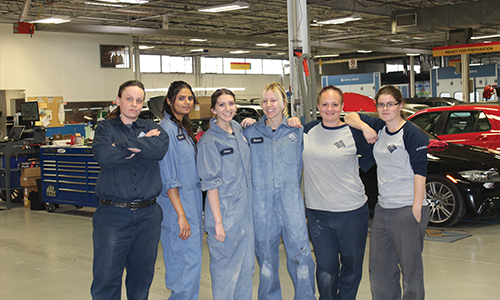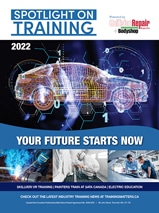Checking into I-CAR Canada’s newest courses, November 9, 2018 — I-CAR Canada has come out with some fresh new courses geared towards training repairers in accordance to the technology present in newer vehicles. Bodyworx Professional is going to highlight a couple of the new courses that are providing knowledge on what is to be expected for hybrid vehicles and vehicle communication networks.
Electric and hybrid vehicles are predicted to take over our roads in the near future, so it is important to understand how to handle this type of technology when in need of a repair.
Hybrid Vehicle Identification and Damage Analysis is a course designed to help students understand how hybrid electric vehicles work and how to identify high voltage parts within the vehicle. The course also goes over safety tips for disabling these types of vehilces.
The first module introduces hybrid vehicles, and by the end of part one, students should have an understanding of how to identify the parts in the vehicle’s high voltage system.
The second module is all about the safety aspect when working with these vehicles. Hybrids contain high voltage electricity, and this part of the coursen explains safety steps necessary when approaching and removing a damaged hybrid vehicle. In addition, it also provides information on how to tell if the vehicle is using badging or VINs.
The final module provides an overview of features specific to hybrid vehicles, such as regenerative braking and added sound to alert pedestrians. Finally, this module concludes by discussing different types of cooling systems used on the high voltage battery and the inverter/converter.
Understanding vehicle communication networks is one of the other new released courses that is slated as a one-hour session, introducing students to vehicle networks and how they have provided improvement into today’s automobile communications. An example of the communication networks they will be referring to are electronic control modules and controller area networks. The other topic this course goes over is the different types of scan codes and how these relationships are used for evaluating the faults.
The course contains two modules. The first goes over the difference between vehicle networks and electrical systems, the different types of electronic control models and how they interact and communicate with network sensors and indicators. The characteristics of the most common databases in vehicles today are also on the agenda for discussion.
Part-two of this course starts with instructions on the different types of scan codes and what the specific parts of a code indicate. Students will then review a scan report and interpret multiple codes of how they relate with the communication network.

























